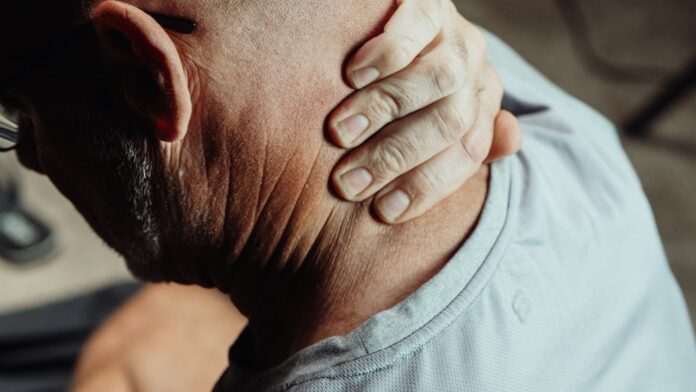Fault is the backbone of personal injury claims in Connecticut. Insurance companies and courts want tangible proof, not stories. They want proof that provides a definite line of causality between activities and injuries. Building a strong case requires understanding what evidence matters and how to present it effectively.
“Think of fault as a chain. One loose link and the whole claim comes apart. Smart claimants build strong cases with the right tools and strategies,” says Russell Berkowitz, founding partner of Berkowitz Hanna Malpractice & Injury Lawyers. If you are in a personal injury case, this is how you can prove fault under Connecticut law.
How to Prove Legal Liability
Proving legal liability in Connecticut personal injury cases involves demonstrating a breach of duty of care. Courts look for clear connections between actions and harm. They scrutinize whether an individual acted like an average person would in the same situation.
Evidence can be in the form of witness statements, police reports, or even computer code. For example, a business failing to clear snowy walkways is a clear case of negligence.
Fault in a personal injury claim is also measured by the extent of harm caused. Timelines and paperwork become useful friends when insurance adjusters and attorneys examine your case.
The Role of Comparative Negligence in Claims
Connecticut applies a comparative negligence standard with a twist used in personal injury cases. Once both parties are aware of the figures, settlement negotiations shift, and strong evidence directly impacts your recovery.
Insurance companies consider police reports, CCTV recordings, and witness depositions in determining percentages. Suppose you slipped inside a shop but ignored a warning sign; your compensation decreases by your share of fault.
Lawyers utilize the law’s 51 percent standard as leverage when they negotiate. Settlement negotiations change once both parties know the figures, and thus, solid evidence will have a direct effect on the amount of recovery.
Types of Comparative Negligence Rules
Comparative negligence rules exist in three primary categories throughout the United States. Pure comparative rules permit anyone to recover damages regardless of their fault, even if it reaches 99 percent. Connecticut does not subscribe to this rule.
Modified comparative negligence, which Connecticut uses, precludes recovery if your fault is 51 percent or higher. Purely comparative or “contributory” negligence states are the only ones that prevent any recovery when you have some amount of fault.
Knowing these differences is valuable for multi-state claims or out-of-state accidents. Knowledge of Connecticut’s modified approaches gets you ready for local courtrooms and claim settlements.
Handling Claims When Liability Is for More Than One Person
There are instances in Connecticut where more than one person or entity shares the blame. This is what the law calls “joint and several liability.” Each individual could be liable for the full judgment or only their own portion, depending on the circumstances.
Claims get tricky fast when more than one insurance company is involved. Adjusters walk through details to allocate fault and payments and even bring in lawyers to haggle.
Having your own lawyer keeps the process in order. In addition, accurate documentation and clear communication prevent one side from shirking their share.
The Process of Proving Who Was at Fault
Connecticut claims are resolved without entering a courtroom. You negotiate with insurance adjusters, trading evidence and accounts through letters or telephone calls. Powerful arguments employ basic facts, such as who rear-ended the other car, to pinpoint fault without lawyer language.
Insurance companies look for facts according to common sense and road rules. Submitting clear-cut accident reports, witness accounts, or photographs hastens the process. Your case becomes more solid as you correlate facts with a person’s failure to act with caution.
According to Cornell Law School’s Legal Information Institute, proving negligence requires establishing four elements: duty, breach, causation, and damages, which form the foundation of most personal injury claims. If negotiations fail, the court comes next. Rules become stricter, and lawyers handle technicalities.
Gathering and Preserving Critical Evidence
The strength of your personal injury claim depends heavily on the quality and quantity of evidence you collect. Start documenting everything immediately after the incident occurs. Take photographs from multiple angles, capture video footage if possible, and collect contact information from witnesses who saw what happened. Medical records are equally crucial, as they establish the direct link between the incident and your injuries.
Keep a detailed journal documenting your pain levels, limitations, and how the injury affects your daily life. Save all receipts related to medical treatment, medications, travel to appointments, and any other expenses incurred due to the injury. The more comprehensive your evidence collection, the stronger your position during negotiations or trial.
Conclusion
Proving fault in a personal injury claim requires careful preparation, thorough documentation, and a clear understanding of Connecticut’s legal standards. From establishing legal liability to navigating comparative negligence rules, every element of your case matters.
Building a strong foundation with solid evidence and expert legal guidance significantly improves your chances of a favorable outcome. If you are facing the challenges of a personal injury claim, working with an experienced attorney can help you navigate the complexities and secure the compensation you deserve.
Find a Home-Based Business to Start-Up >>> Hundreds of Business Listings.














































